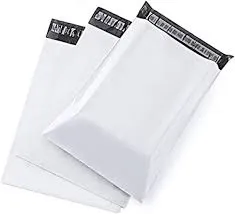compostable transparent bags
The Rise of Compostable Transparent Bags A Sustainable Solution
In the age of environmental awareness, the focus on sustainable packaging solutions has never been more critical. Among the innovative options becoming increasingly popular are compostable transparent bags. These bags not only meet the functional needs of consumers but also align with the growing demand for environmentally friendly products. With rising concerns about plastic pollution, compostable transparent bags present an appealing alternative for both businesses and consumers.
Compostable bags are designed to break down into natural materials under specific conditions, minimizing the long-lasting environmental impact associated with traditional plastic bags. Different from regular plastic, which can take centuries to decompose, compostable bags decompose within a few months when exposed to the right composting conditions. This includes moisture, temperature, and microbial activity found in industrial composting facilities. As a result, these bags contribute to a circular economy by returning nutrients back to the soil, rather than contributing to landfill overflow.
One of the key advantages of compostable transparent bags is their versatility. They can be used for a range of applications including grocery shopping, food packaging, and shipping materials. Their transparent nature allows for easy visibility of the contents, which is essential in retail and food service settings. Businesses looking to adopt sustainable practices can utilize these bags without sacrificing functionality or aesthetic appeal. Moreover, with increasing numbers of consumers valuing eco-friendly brands, incorporating compostable bags can enhance a brand’s reputation and attract a loyal customer base.
compostable transparent bags

Critically, the material used to make compostable bags plays a significant role in their effectiveness. Most compostable bags are made from plant-based materials such as corn starch, PLA (polylactic acid), or other bio-based polymers. These alternatives not only help in reducing the reliance on fossil fuels but also provide a viable solution for those seeking to minimize their carbon footprint. However, it is essential to note that not all bags labeled as compostable are created equal. Certification standards, such as ASTM D6400 or EN 13432, ensure that products meet specific compostability requirements, making it easier for consumers to make informed choices.
Despite the advantages, there are challenges associated with the adoption of compostable transparent bags. One major hurdle lies in the existing waste management infrastructure, which varies significantly across different regions. Many compostable bags are not suitable for conventional recycling systems, and if disposed of incorrectly, they can still contribute to pollution. To fully leverage the benefits of compostable bags, there needs to be improved public awareness and the establishment of efficient composting facilities that can handle these materials effectively.
In conclusion, compostable transparent bags represent a promising step forward in sustainable packaging. Their ability to decompose rapidly and return nutrients to the earth makes them a compelling alternative to traditional plastics. As more consumers and businesses strive to reduce their environmental impact, these innovative bags could play a pivotal role in promoting eco-friendly practices. While there are challenges to overcome, the potential benefits of incorporating compostable transparent bags into everyday use are significant, paving the way toward a more sustainable future. Embracing these solutions today can lead to a cleaner planet for generations to come.
-
The Best Uses for Small Trash Bags in Daily LifeNewsJul.01,2025
-
Stylish Reusable Grocery Bags TrendsNewsJul.01,2025
-
Shipping Advantages of Using Bubble Envelopes BulkNewsJul.01,2025
-
How Compostable Mailing Bags Reduce Environmental ImpactNewsJul.01,2025
-
Environmentally - Friendly Bulk Poly MailersNewsJul.01,2025
-
Eco Friendly Custom Laminated Tote BagsNewsJul.01,2025
-
Have the freedom of customizing your custom mailers any way you want! Our dedicated packaging support will help deliver you the mailing experience you need to elevate your shipping experience to the next level! Start making a strong impression on your customers and stand out from your competitors! -
LIYA uses high quality raw materials which directly purchased from large enterprises domestic and overseas such as PetroChina, Sinopec, Sabic, Equate, ExxonMobil, Dow Chemical, Total, and Borouge, ensuring the price advantage and quality of the raw materials. -
LIYA uses high quality raw materials which directly purchased from large enterprises domestic and overseas such as PetroChina, Sinopec, Sabic, Equate, ExxonMobil, Dow Chemical, Total, and Borouge, ensuring the price advantage and quality of the raw materials.





